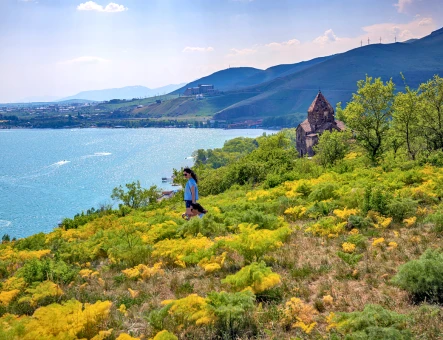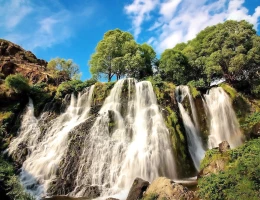Private tour: The unique invitation to explore Armenia and Georgia in 2 days
Lake Sevan, Sevanavank Monastery, Dilijan, Haghartsin Monastery
1. Lake Sevan
























2. Sevanavank Monastery
50-60 min























3. Dilijan
20-30 min


























4. Haghartsin Monastery
50-60 min























Tbilisi, Mtskheta, Jvari Monastery, Yerevan
1. Tbilisi
150-180 min























The tour starts with narrow streets, preserved from the early medieval region of Narikala, and ends with spacious Rustaveli Avenue. The modern shape of Tbilisi is a bright mixture of majestic cathedrals and ancient ruined castles, old neighborhoods and picturesque courtyards with openwork balconies, soviet buildings and ultramodern business centers, the contrast of which can be better seen from bird's-eye view by taking a cable car.
2. Mtskheta
60-70 min












3. Jvari Monastery
30-40 min










Inclusions
-
Professional drivers
-
Air-conditioned vehicles
-
Bottled water
-
Free pick-up & drop-off within Yerevan
-
Vehicle & passengers insurance
-
Extra stops on the route upon request
-
Driver/Guide accommodation & meals
Exclusions
-
Hotel accommodation
-
Significant deviations from the route
-
Alcoholic beverages if lunch option selected
-
Audio guides
-
Wi-Fi in the vehicles
What to expect
- Visit the "Blue pearl" of Armenia
- Admire the forests of the "Armenian Switzerland"
- See the most popular sites of the capital of Georgia
- Stroll along the cozy streets of the old town
- Feel the incomparable Georgian flavor
- Marvel at the 7th & 11th centuries' architecture
*200 steps to climb to Sevanavank
*600 m to walk down the hill to Haghartsin
*Residents of some countries (please, check the details at the office) may need to apply for the visa in advance to enter Georgia or/and to obtain one more entry visa to come back to Armenia
*Entry visa to Georgia or/and entry visa to come back to Armenia is NOT included
*Kindly have your Valid Passport with you for crossing the border & hotel check-in
Booking conditions
Cancellation & modification
Meet our Guides

Ani Mshecyan
Good afternoon, dear friends! I'm a Russian-speaking tour guide since 2023, offering tours around Armenia. My main priority is the interests and preferences of our guests. Each tour is customized individually and takes place in a pleasant, friendly atmosphere. The excursions are as engaging, creative, and informative as possible. I'll be happy to meet you and share my knowledge about our beautiful country.

Alisa Grigoryan
Welcome! I'm Alisa, an experienced guide with a deep passion for the cultures of Armenia and Georgia. I look forward to sharing the rich history, breathtaking landscapes, and warm hospitality of our region with you.

Mariam Dabaghyan
Hello! I'm Mariam, and I've been working as a tour guide since 2019. If you enjoy tours that are rich in content yet easy-going and never boring, then we're on the same path!

Arev Makhsudyan
My name is Arev (which means "Sun"). I am an English-speaking tour guide in Armenia, working since 2018. If you choose me as your guide, you will learn a lot about Armenian history, nature, culture, and traditions – and as a bonus, I'll perform Armenian traditional folk songs for you.



